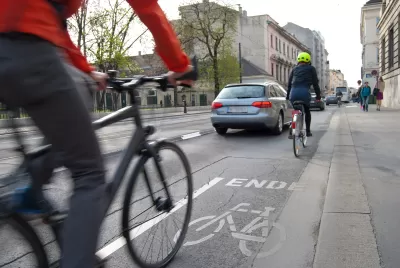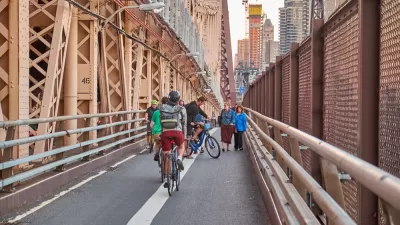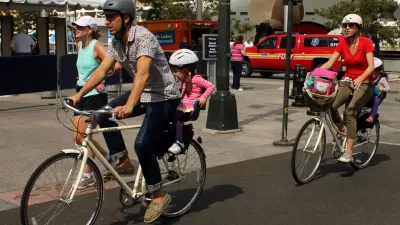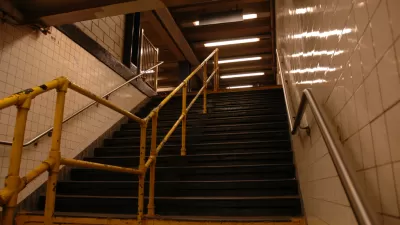When the line shuts down for repairs next year, an uptick in cycling is expected. Infrastructure improvements will make this shift easier and could promote biking well into the future.

Aaron Gordon considers the effects the L train shutdown will have on cycling in New York. The line is scheduled to go offline for repairs starting in the spring of 2019. Predictions indicate that two percent of riders, about 4,500 riders, will move over to biking, and almost half to three-quarters of them will be using the Williamsburg Bridge, reports Gordon.
In anticipation of this increase in cyclists, the New York City Department of Transportation is proposing a series of road improvements, including better connections to the Williamsburg Bridge and protected bike lanes in the area.
But not all the changes have been well received, says Gordon. A plan for a two-way protected bike lane along 14th Street was met with resistance from residents. Now two one-way bike lanes are planned for 12th and 13th Streets, which disappointed bike advocates who were hoping for the safer two-lane design and a crosstown route that would encourage cycling.
A shift to cycling is critical and it benefits all travelers, argues Gordon. Otherwise, he says, traffic will worsen as the number of ride-hailing vehicles increases and other transit modes reach capacity. “And the more people who regularly bike, the louder the calls will be for safer, protected infrastructure. And maybe, just maybe, this positive cycle will continue after the L resumes rumbling under the river,” adds Gordon.
FULL STORY: Why biking is critical for surviving the L train shutdown

Alabama: Trump Terminates Settlements for Black Communities Harmed By Raw Sewage
Trump deemed the landmark civil rights agreement “illegal DEI and environmental justice policy.”

Study: Maui’s Plan to Convert Vacation Rentals to Long-Term Housing Could Cause Nearly $1 Billion Economic Loss
The plan would reduce visitor accommodation by 25% resulting in 1,900 jobs lost.

Planetizen Federal Action Tracker
A weekly monitor of how Trump’s orders and actions are impacting planners and planning in America.

Waymo Gets Permission to Map SF’s Market Street
If allowed to operate on the traffic-restricted street, Waymo’s autonomous taxis would have a leg up over ride-hailing competitors — and counter the city’s efforts to grow bike and pedestrian on the thoroughfare.

Parklet Symposium Highlights the Success of Shared Spaces
Parklets got a boost during the Covid-19 pandemic, when the concept was translated to outdoor dining programs that offered restaurants a lifeline during the shutdown.

Federal Homelessness Agency Places Entire Staff on Leave
The U.S. Interagency Council on Homelessness is the only federal agency dedicated to preventing and ending homelessness.
Urban Design for Planners 1: Software Tools
This six-course series explores essential urban design concepts using open source software and equips planners with the tools they need to participate fully in the urban design process.
Planning for Universal Design
Learn the tools for implementing Universal Design in planning regulations.
Caltrans
Smith Gee Studio
Institute for Housing and Urban Development Studies (IHS)
City of Grandview
Harvard GSD Executive Education
Toledo-Lucas County Plan Commissions
Salt Lake City
NYU Wagner Graduate School of Public Service





























